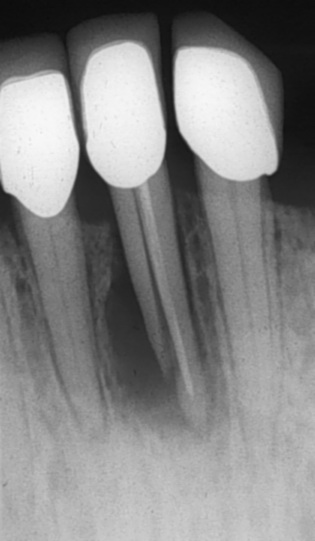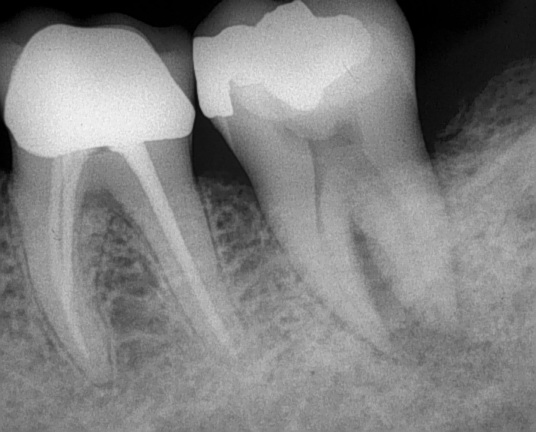Longitudinal tooth fractures




Vertical tooth fractures that often cause diagnostic problems are cracked tooth, split tooth and vertical root fracture.
Cracked tooth has an incomplete mesiodistal fracture line that often causes variable symptoms. It occurs in molars and premolars, often in vital teeth. Treatment includes stabilization of the crown. Prognosis is uncertain. Fracture line is not seen in the radiograph because of its orientation.
Split tooth has a mesiodistal fracture line that has divided the tooth into separate segments. One of the segments typically is motile, while the other one is less motile or nonmotile. The tooth is usually very symptomatic. Split tooth is seen in molars and premolars. Fracture line is not seen in the radiograph because of its orientation.
Vertica root fracture can occur in any tooth, being most common in the mesial roots of first molars. It is more frequent in root filled teeth, but can occur also in vital teeth. Vertical root fracture is a common cause of paradental infections and bone destruction that can be misinterpreted as apical periodontitis. Unlike horizontal root fracture, vertical fracture is often invisible in radiographs. However, careful clinical and radiographic investigation often indicates vertical fracture even when it cannot be directly seen in the radiograph: a single, deep and narrow periodontal pocket in an otherwise periodontally healthy environment is a strong indication of vertical root fracture. Also, persistent infection in apicectomised root-filled teeth with posts may suggest vertical root fracture.
Vertical root fractures cannot be treated, the involved tooth/root is usually extracted.